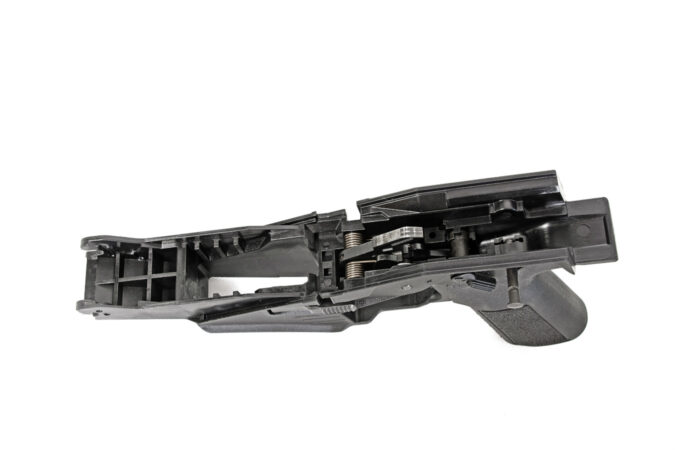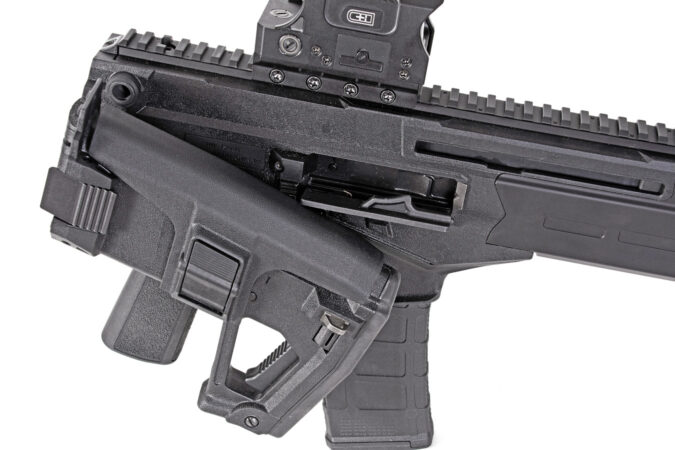IWI Carmel: Israel’s Special Roast
Photos by Kenda Lenseigne
Caramel Frappuccinos are the downfall of modern civilization. This drink proves how far we have gone down the wrong path; is this even coffee anymore?
The addition of so many options that it takes 20 minutes just to figure out what kind of milk you want is not what coffee is supposed to be. There was a time when black and scalding hot was the only choice of brew. People received fourth degree burns from the coffee of my childhood; today’s coffee wouldn’t hurt a fly.
All of the extra froth on top has degraded the cup o’joe to a drink safe for all ages. This used to be strictly business, a harsh drink for harsh times. Today’s coffee is more dessert than jitter juice — 57 different milks and 14 kinds of sugar are no way to go through life.
Giving customers unlimited extras is great in theory but it can have adverse effects. The choices become more about fluff than necessity. This is the definition of first world problems.
This thought process has spilled over into the firearms industry.
There are so many variations, and it’s hard to tell them apart. There has been a push to build a better fighting rifle, but most can’t beat a quality-built AR-15 or AK-47. These icons have earned their place in history by slowly evolving into the refined fighting machines of today. They do have their shortcomings but, despite them, are hard to beat.
Arguments can be made that the direct impingement system of the AR is a weakness, and the AK has been described as an unrefined peasant’s rifle, fit only for orcs who drink their borscht from a straw boot.
Cherry-picking features from these iconic rifles is common practice. The combination of ergonomics from the AR mixed with the beefy reliability of the AK is where many rifles try to find success, but most end up looking like an AR-15 with an extra chromosome.
To fit a piston system under the hood of an AR, most opt for a short stroke system. For those unlettered in the piston system game, there is short and long stroke. The AK-47 is a long stroke system, meaning the piston is directly attached to the bolt carrier and it travels the entire length of the cycle.
Whereas a short stroke system relies on the inertia of the piston hitting the bolt carrier, in turn helping the cycle along and thereby creating a “shorter” stroke. The long stroke system tends to be simple and beefier, while the short stroke is more refined, with less recoil. Either way, a piston system nets a cleaner action and increased reliability.
EXPORTING THE BEANS
Israeli Weapon Industries (IWI) has thrown their hat in the ring for the title of top fighting rifle. IWI started life out as the small arms branch of the now defunct Israeli Military industries LTD. IWI has gained momentum with the Masada pistol and the Tavor rifle in addition to the classic Uzi and Galil rifle. The Carmel rifle is their latest offering.
The Carmel started life off as a short stroke, piston driven, 7.62×39 military contract gun. The contract got scrapped, and the Carmel was put on a shelf. Later, the gun was resurrected but chambered in the NATO standard 5.56×45, presumably to make it more appealing for export. At this point, the Carmel was still in the advanced prototype phase, as the gun was never put into production. Denied again and again. Fast-forward a few years and the Carmel caught the attention of the U.S. IWI team.
The proposition was that there might be a market for this gun in the private sector, specifically the good ole U.S. of A. More than a decade of trying to gain traction has passed, but the Carmel finally made it to the production line with the bonus of modernization and updated parts.

The Carmel rifle is similar in operation and aesthetics to the CZ Bren 2, the FN Scar, and Bushmaster ACR, with the main selling point of these rifles to provide a military grade rifle in a foldable package. This is the one place in which these guns have a leg up on the AR, but it hasn’t been enough to overthrow the champ. The Carmel is the latest attempt to get this recipe right, and the Israelis pride themselves on making arms to fight in the harshest of conditions. They put their guns through the grinder — we won’t be so hard.
THE INGREDIENTS
The Carmel features a pencil profile 16-inch barrel with a muzzle brake (that should be ditched for a suppressor mount if you have any culture at all). The free-floating barrel is cold hammer forged and features a 1:7 twist.
The adjustable gas block offers two settings, namely regular and suppressed. The aluminum handguard features two stories of M-LOK rails and a Piccatiny rail running the length of the handguard. There’s probably enough room for an espresso machine, should you wish to bolt one up.
One of the gun’s more interesting features is the charging handle, being non-reciprocating and able to be moved to the opposite side without tools. Lock the bolt back, find the notch for the charging handle, and push it to the other side. Pretty simple, but most ingenious innovations usually are.
The Carmel is tall on controls. All of the switches and levers are ambidextrous. The oversized “ping pong” paddle bolt release and ambi magazine release are easy to find and activate as they would in the standard AR-15 positions. The ejection port is about the only feature that’s not ambidextrous — ejection is right-side only. There’s no forward assist, but there is a notch cut into the carrier to push rounds into battery with your finger, should you need to close the bolt quietly.

The trigger is a proprietary affair, so what you get is what you get. The two-stage trigger breaks clean at about 4 pounds and is by no means a hair trigger but, it does break nicely for a freshly engineered trigger with no aftermarket options.
The ambidextrous safeties only need 45 degrees to activate and don’t interfere with the shooting hand as some designs do. The Carmel uses standard AR-15-style magazines, and its magwell is flared for those sloppy magazine changes. The B5 systems grip comes standard and is a quality piece, but you can swap it for any AR-style grip you fancy. There are a couple of QD mounts integrated toward the back of the receiver to accept the sling of your choice.
The stock’s folding latch is fairly stiff, and ours had to be slammed into the locked position. The fully adjustable butt stock is a well-thought-out piece that does the task extremely well. We wouldn’t mind seeing this as a stand-alone part for other platforms, and hope IWI releases it as its own SKU.
TASTING THE BREW
The first shots with the Carmel left us with a bad taste in our mouth. The rifle didn’t make it past a few rounds without failures to extract (also a stuck case that had to be extracted at home). This was with steel-cased plinking ammo, and everyone knows that steel expands and contracts differently than brass. Once we filled the mags with brass-cased ammo, it ran like a champ. After sorting out the ammo, we got the ball rolling on some accuracy testing. The gun was benched, and targets placed at 100 yards.
We used 55-grain Independence, 55-grain steel-cased Wolf, 55-grain Hornady V-Max, 69-grain Federal, and 75-grain Hornady ammo as our test media. Accuracy was perfectly adequate for a fighting rifle.

The tightest group was made by the 69-grain Federal ammo, right at an inch. The 75 grainers came in at 1.2 inches and 1.4 inches with the Independence. It didn’t like the Wolf ammo at all (about 3 inches). It’s not uncommon for a gun not to like a particular ammo, so we just racked it up to a bad combination. In the grand scheme of things, 3 MOA at 100 yards will still do the job. Just make sure you check your ammo and gun combo before you bet your life on it.
As far as recoil impulse goes, the Carmel is on the softer side of piston guns. Running the gun and all-around manipulation is a bit of an acquired taste, as this gun is a chunky boy. Oddly, the gun doesn’t feel as big as it looks, and its ergonomics are close enough to an AR that it isn’t completely foreign.
If you’re already wedded to one system, it should only take a little adjusting to get squared away on the platform. Adding a vertical grip or any kind of handstop to the double decker handguard might be a bit much.
Possibly a character flaw or at least a place for attention, firing the Carmel with a folded stock and a closed dust cover can cause malfunctions. The cheek riser doesn’t allow the dust cover to open completely, and depending on the height you set the cheek riser this could cause a failure to eject. It’s not likely that you will do much shooting with the stock folded, but it’s something to be aware of and make adjustments in your training.
AFTERTASTE
The short stroke piston system has its merits. They are very clean running, reliable when you find the right recipe, and make for great suppressor hosts. Bringing a new platform to market is difficult. Everyone wants to see what the new kid on the block is like. Every angle is under the microscope, and any shortcomings are shown no mercy. You have to be head and shoulders above the rest if you want to make a splash.

Obviously, innovations are a good thing, but if the coffee isn’t worth the squeeze why change? This is definitely not an AR or AK, but it’s not trying to be. The Carmel is its own man. We admit it would be a more refreshing drink without the hiccups and character flaw. These are small details, but our job is to point them out, and as such we can’t see this taking over as our go-to rifle.
The Carmel makes a strong case but just doesn’t have the oomph to get it over the top. It does some things well and others well enough, but it doesn’t seem to cross into the great category. But in a gun store full of the usual, a fresh take on the fighting rifle might be a welcome choice, and if you’re just looking for something different, this might be your cup of tea.
IWI Carmel
- Caliber: 5.56 NATO
- Barrel Length: 16 inches
- Overall Length: 26.75 inches collapsed | 37.25 inches extended
- Weight: 8 pounds, 2 ounces
- MSRP: $1,799

NEXT STEP: Download Your Free Target Pack from RECOIL
For years, RECOIL magazine has treated its readers to a full-size (sometimes full color!) shooting target tucked into each big issue. Now we’ve compiled over 50 of our most popular targets into this one digital PDF download. From handgun drills to AR-15 practice, these 50+ targets have you covered. Print off as many as you like (ammo not included).
Get your pack of 50 Print-at-Home targets when you subscribe to the RECOIL email newsletter. We’ll send you weekly updates on guns, gear, industry news, and special offers from leading manufacturers – your guide to the firearms lifestyle.
You want this. Trust Us.

Read the full article here


